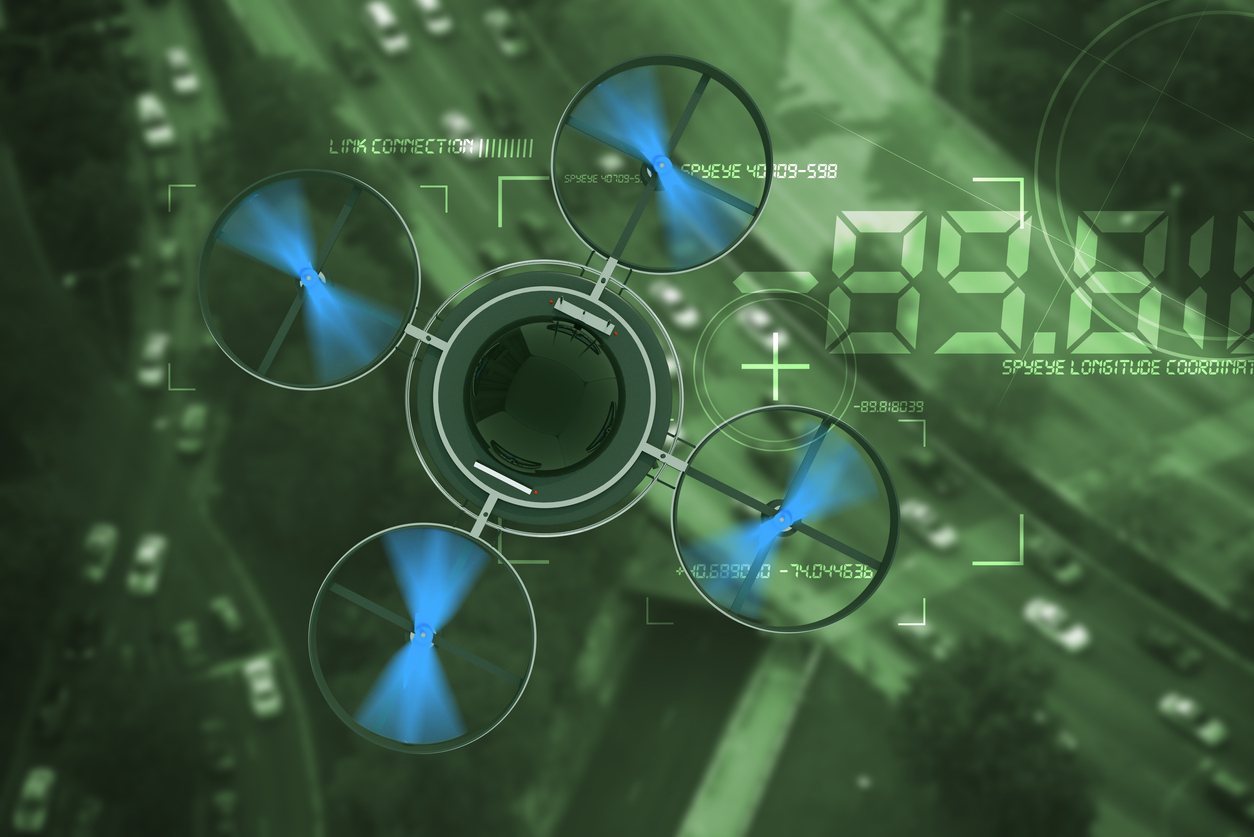

Taiyo Kogyo Column
Guide to Selecting and Using Indoor Drones|Thorough explanation of recommended models, legal regulations, and examples of use.

Indoor drones can be purchased by anyone at an affordable price, and anyone from children to adults can fly them with ease. However, in some cases there are legal restrictions, so it is important to properly understand the information beforehand.
This article details the characteristics of indoor drones, how to choose one, and recommended models to help both beginners and advanced users.
What is an indoor drone?

Generally, an “indoor drone” is defined as a drone that is small enough and light enough to fit in the palm of your hand. The main characteristics of indoor drones are as follows
- Low price
- Aviation Law does not apply
- Resistant to contact with obstacles and crashes
- Small and lightweight (approx. less than 100g)
Indoor drones are small and lightweight, and many are inexpensive, ranging in price from a few thousand yen to tens of thousands of yen. Therefore, even in the unlikely event of damage, the financial burden is minimal.
The light weight of the aircraft also makes it highly resistant to contact with obstacles and crashes. Indoor drones can be used for a wide range of applications, including aerial photography, inspection work, drone racing, and acrobatic flight.
Advantages of Indoor Drones

There are three advantages of indoor drones
- Highly safe
- The Civil Aeronautics Act does not apply.
- Good for practice and education.
Each will be explained in detail.
Highly safe
Indoor drones, as the name suggests, are designed for “indoor flight,” so even beginners can fly stably. The light weight of the aircraft also has the advantage of minimizing damage to people and objects even if it comes into contact with walls or objects indoors.
In addition, many indoor drones are equipped with a “protective guard” to protect the propeller and reduce damage in the event of a collision. Since there is little risk of accidents due to operational errors, even beginners and children can handle them easily.
The Civil Aeronautics Act does not apply.
Indoor drones are limited to indoor use and are therefore exempt from the “Civil Aeronautics Law” regarding outdoor flight. The Civil Aeronautics Law imposes no-fly zones and altitude restrictions on outdoor flights, but indoor drones are used indoors and are not subject to these restrictions. Indoor drones can be flown without special permission or procedures.
Good for practice and education.
Indoor drones are not subject to aviation laws and are therefore suitable for learning and practice.
There are three reasons
- Not dependent on time zone
- Not affected by rain or wind
When flying a drone outdoors, the Civil Aeronautics Law prohibits flying at night. Therefore, when flying outdoors, practice time is limited, but when flying indoors, the Aviation Law does not apply, so drones can be flown even at night. Indoor flying is not affected by the external environment, such as rain and wind, so stable practice is also possible.
Drone operation is also expected to train the ability to coordinate “hands” and “eyes” (=hand-eye coordination). The benefits of this technology are also useful for the ability to learn science, technology, engineering, and mathematics on one’s own (i.e., STEM education), making it useful as a national or company-led educational curriculum.
Other benefits of programming the drone would be to sharpen “coating skills” and improve “problem-solving skills”.
Indoor drone precautions

Here are some cautions for indoor drones.
Be aware of the correct knowledge in advance, and use drones safely.
Not suitable for long time use
Indoor drones do not have a lot of battery capacity due to the small size of the aircraft (less than 100g). It is not suitable for long-time use, so if you fly it, be sure to have several other batteries available.
Susceptible to wind
Indoor drones tend to be susceptible to wind because of their light weight. Since flight is affected by opening windows, turning on blowers, etc., fly in a windless environment as much as possible.
Short operable distance
Indoor drones tend to be short, with a total controllable range of about 50 meters. Some people may find this insufficient. If the drone is too far away from the user, it will not be controllable, so be careful about the distance when flying it in a large indoor space.
How to choose an indoor drone

From here, we will explain how to select a specific indoor drone.
The three points are as follows
- Weight and Size
- Features and Performance
- Price and Quality
Let’s take a closer look at each of these.
Weight and Size
A drone suitable for indoor use should be palm-sized and lightweight. A good choice for an indoor drone is a small aircraft weighing less than 100 grams. Lightweight drones are easy to carry and can be practiced anywhere.
In addition, choosing a small drone reduces damage in the event of a collision or crash, and allows stable flight in a confined space. Select a drone of appropriate weight and size according to the purpose of use and practice environment.
Features and Performance
Since indoor drones are designed to be flown indoors, “stable flight” and “high operability” are required. An aircraft equipped with operability that is easy to use for both beginners and advanced users will naturally enable stable flight.
There are four main points to look at in terms of features and performance
- Camera function
- Battery life
- Propeller Guard
- Obstacle avoidance sensor
Selecting a drone with features that help you fly indoors will make your flight more comfortable.
Price and Quality
Indoor drones come in a wide range of price points, so it is important to choose an aircraft that fits your budget. Some inexpensive drones are of good quality, so you should consider purchasing a drone that strikes a balance between price and quality. If you are not sure which one is right for you, we recommend choosing a reliable manufacturer.
There are three key points to determine reliability
- Repair services available.
- Highly rated reviews
- Excellent post-purchase support.
It will be easier to find a balance between price and quality by referring to other users’ evaluations.
Recommended indoor drone models

Now that you understand how to choose, here are some actual recommendations.
- for children
- for beginners
- For advanced users
The items are divided into the above categories, so please refer to the items that suit you best.
Recommended models for children
Drones handled by children are recommended to be safe and game-friendly.
The three specific models are as follows
- UFO type drone
- DEERC Drone
- Holy Stone HS450-B
The “UFO-type drone” has a 360-degree protective cover, so there is no need to worry about being injured by the propellers. It flies easily just by throwing it, so even children can operate it easily.
DEERC drones are inexpensive and offer a wide variety of models for children. Some models are equipped with cameras and others have LEDs built into the drone itself.
The Holy Stone HS450-B is a set of two drones that can compete against each other. The integrated propeller guard provides a high level of safety, allowing you to enjoy piloting and competition with peace of mind.
Recommended models for beginners
The first drone a beginner chooses should be easy to operate and relatively inexpensive.
The three specific models are as follows
- Ryze Tech Tello
- EMAX Tinyhawk Indoor Racing Drone
- DJI Mavic Mini
The Ryze Tech Tello is an inexpensive and relatively easy to operate drone. It can be handled in conjunction with a smartphone and can be programmed to fly, making it useful for STEM education.
The EMAX Tinyhawk Indoor Racing Drone is a drone suitable for indoor FPV (out-of-sight) flight. If beginners want to try FPV flight, choose an easy-to-handle model like this one.
The DJI Mavic Mini is a lightweight and compact drone that is easy to handle indoors. It can also be used as a camera drone, making it suitable for indoor as well as outdoor use.
Recommended models for advanced users
Advanced riders should be able to easily speed up and acrobat with an eye toward competing in races.
The three specific models are as follows
- BetaFPV Beta75X
- GEPRC CinePro 4K
- iFlight Alpha A85
The BetaFPV Beta75X is a high-performance FPV drone, suitable for advanced drone racing and acrobatic flight.
The GEPRC CinePro 4K is a cinema drone equipped with a 4K camera and is recommended for indoor aerial photography.
The iFlight Alpha A85 is equipped with high-performance components and is suitable for advanced FPV racing and freestyle flying.
Notes on Legal Regulations

Although we have explained that “indoor drones are not subject to aviation laws,” it is important to understand the basic laws and regulations when dealing with drones.
The revised Civil Aeronautics Act and radio licenses will be explained here.
Aviation Law and Regulation of Unmanned Aerial Vehicles
When flying a drone outdoors, you are obligated to follow the “Civil Aeronautics Law,” which was revised on June 20, 2022. Drones are divided into “unmanned aircraft” for industrial use and aerial photography, and “model aircraft” which are toy drones, and the rules differ depending on their type and weight.
The specific rules of the “Revised Civil Aeronautics Act” are as follows

Unmanned aircraft weighing 100 g or more are obligated to register pilot and other information tied to the aircraft.
On the other hand, model aircraft are not required to register their aircraft, so the rules of the revised Civil Aeronautics Law do not apply to them. all drones weighing less than 100 g fall under the category of model aircraft and are therefore suitable for indoor flights.
Communication Standards and Radio Licenses
Indoor drones communicate primarily via Bluetooth and Wi-Fi. They use frequencies that do not require a radio license, so there is no need to apply for a station opening.
The communication range varies depending on the model and communication standard, but in general, the range is sufficient. Although it may be affected by obstacles or radio interference, communication is possible without problems if used in the appropriate settings and environment.
Examples of Indoor Drone Applications

Finally, here are some common applications of indoor drones.
If you have become familiar with the basic handling of drones, you may also try the following utilization methods.
Aerial photography and filming practice
Indoor drones, which are weatherproof, are often utilized for indoor aerial photography. You can shoot according to your own schedule and capture unique perspectives on film, regardless of whether you are a beginner or an expert.
In addition, indoor aerial photography is safe and does not require a permit application. Indoor drones are also convenient in that they allow for easy aerial photography.
There are also inexpensive, palm-sized training drones for beginners, which are suitable for use only for practice without taking aerial photos. Even if you are thinking of taking aerial photos outdoors in the future, it will be safer if you first learn secret operations and photography techniques indoors.
The key to indoor aerial photography is to maintain constant movement and speed, and to be aware of capturing stable images. It is important to practice to improve your stability so that you can cope even if some wind blows outdoors.
Inspection work and lifesaving
Indoor drones are being used to improve the efficiency of inspection work in confined spaces and at heights. By using indoor drones to supplement inspections in areas that are difficult for people to work in, it also helps to ensure worker safety.
Drones can also be used to assist in lifesaving under debris and in confined spaces. As with inspection work, this would help ensure the safety of the rescuers.
In such cases, drones equipped with thermal imaging cameras can be used to assess the situation and improve the efficiency of rescue operations.
Drone Racing and Acrobatics
Indoor drones are small and maneuverable, making them suitable for indoor drone racing. Some indoor drones are suitable for 360-degree somersaults, high-speed turns, and acrobatics, which can showcase a variety of flight options in a race.
It is also possible to enjoy FPV (out-of-sight) flight through FPV goggles. There are various types of drone races, and those who are familiar with in-sight flight may want to try participating in FPV (out-of-sight) races.
As explained earlier, indoor drones are suitable for practice, so they can be used as practice drones for both beginners and advanced users to hone their piloting skills.
summary

Indoor drones are lightweight, small, and easy to handle. Prices range from a few thousand yen to several tens of thousands of yen, making it an ideal drone for beginners to try out, as it is easy to afford and suitable for practice.
Always keep basic regulations in mind to avoid unexpected problems.
If you want to use an indoor drone or practice flying, we recommend using an indoor practice facility with an indoor drone.
For those who think, “There is no practice site nearby” or “I want to set up my own practice site,” one option is to construct a “tent warehouse. Because of its excellent weather resistance, it can also be used as a drone training site.
There are three main advantages of tent warehouses
- low cost
- short-term construction
- Excellent weather resistance
Tent warehouses are so bright that lighting is unnecessary during the day, ensuring safety and workability. The simple structure allows for a short construction period and reduces the cost of warehouse construction.
If you are looking to commission a tent warehouse, we recommend Taiyo Kogyo Corporation, a manufacturer that has been in business for 100 years & has the No.1 market share in Japan.
Tent Warehouseへの
Contact us

What you need to know when building a warehouse
We packed it all in.
Clues to solving the 2024 problem
Recommended for
I don't know where to start in building a warehouse.
I want to build a warehouse in an economical way.
Which type of warehouse should we build?
I want to learn the basics of warehouse construction anyway.
I'm concerned about the 2024 problem, but I don't know what to do about it.
Related Articles
- TOP>
- Taiyo Kogyo Column>
- Guide to Selecting and Using Indoor Drones|Thorough explanation of recommended models, legal regulations, and examples of use.








